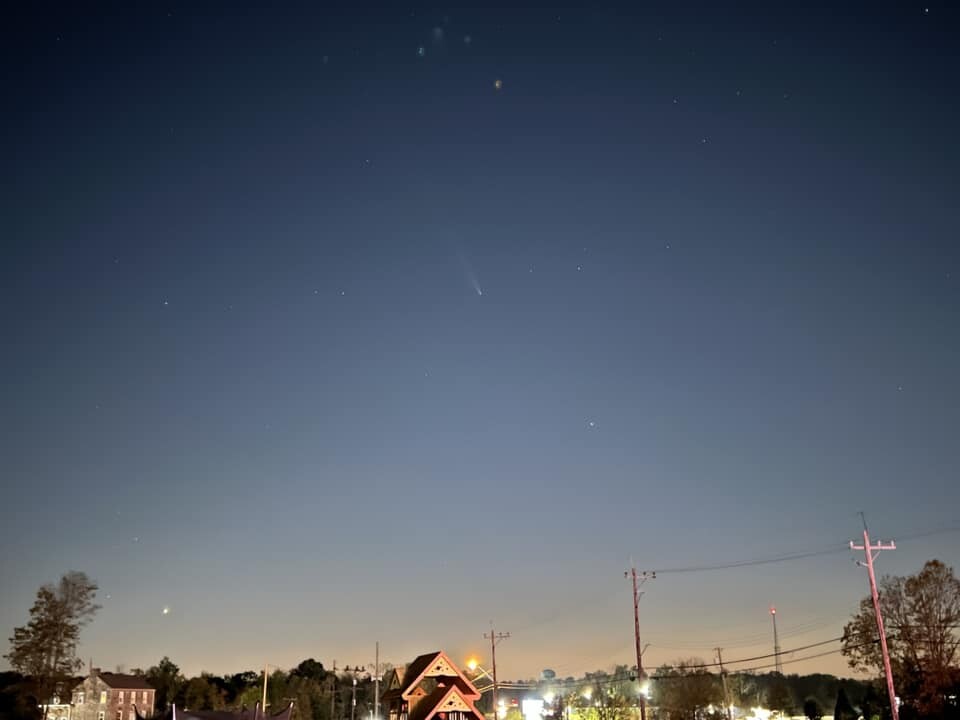CINCINNATI — A comet that has been making passes by Earth for more than a week was clearly visible in the Cincinnati area Thursday night thanks to some clear skies.
Comet Tsuchinshan-Atlas was bright enough to see with the naked eye, but binoculars and telescopes gave a better view.
The comet was visible from places like Goshen, Middletown, Oxford and Franklin. It was most visible around 8:45 p.m. Thursday night after the sun set.
You can see some of the pictures of the comet from around the Tri-State that some shared with us below:





What is a comet?
Comets are frozen leftovers from the solar system’s formation billions of years ago. They heat up as they swing toward the sun, releasing their characteristic streaming tails.
In 2023, a green comet that last visited Earth 50,000 years ago zoomed by the planet again. Other notable flybys included Neowise in 2020, and Hale-Bopp and Hyakutake in the mid to late 1990s.
Where did comet Tsuchinshan-Atlas come from?
The comet, also designated C/2023 A3, was discovered last year and is named for the observatories in China and South Africa that spied it.
It came from what’s known as the Oort Cloud well beyond Pluto. After making its closest approach about 44 million miles (71 million kilometers) of Earth, it won’t return for another 80,000 years — assuming it survives the trip.
Several comets are discovered every year, but many burn up near the sun or linger too far away to be visible without special equipment, according to Larry Denneau, a lead researcher with the Atlas telescope that helped discover the comet.
How to view the comet
Those hoping to spot comet Tsuchinshan-Atlas should venture outside about an hour after sunset on a clear night and look to the west. The comet will be making passes through the end of October, so you still have a chance to see it.
The comet should be visible from both the northern and southern hemispheres.
Information from the Associated Press was used in this article.








